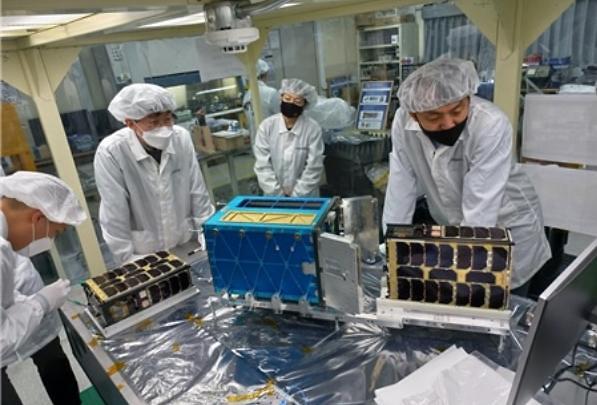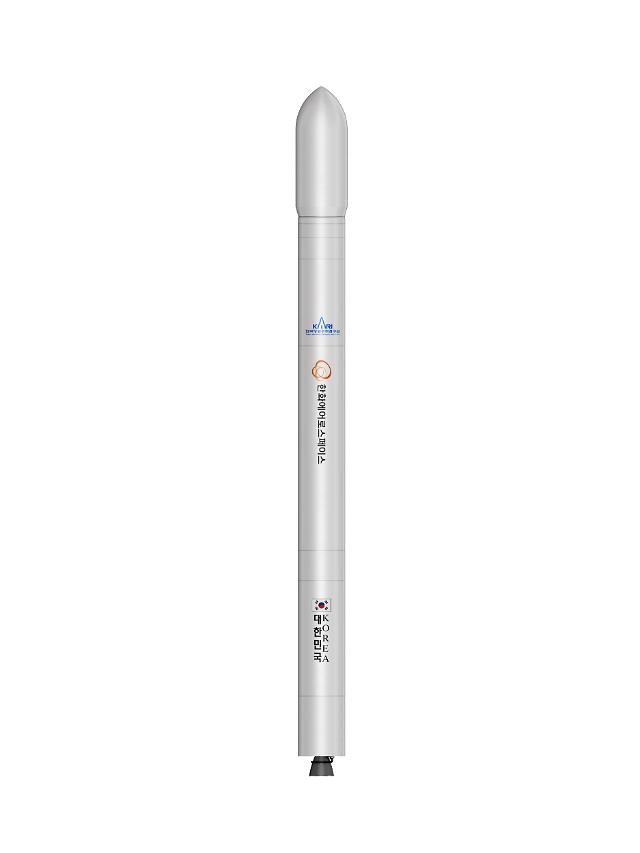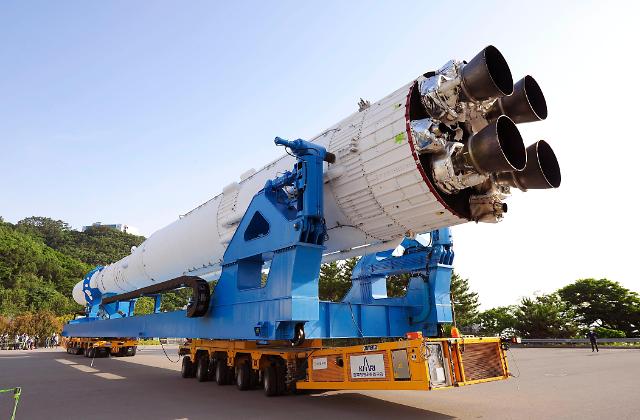
[Courtesy of KAIST]
SEOUL -- A sudden gust of winds foiled the launch of a small liquid-propellant sounding rocket designed by South Korea's first rocket start-up, Perigee Aerospace, which hopes to become a pioneer in the country's fledgling private space industry by developing a larger two-stage orbital launch vehicle called "Blue Whale" capable of putting a small satellite into low orbit through collaboration with a state research university.
A sounding or research rocket carries an instrument for measurements and performs scientific experiments during its sub-orbital flight from 48 to 145 kilometers (30 to 90 miles) above the surface of the Earth, the altitude generally between weather balloons and satellites.
In a remote coastal area on the southern resort island of Jeju on December 29, Perigee Aerospace launched a test rocket with a length of 3.2 meters, a diameter of 19 centimeters, and a weight of 51 kilograms, using ethanol and liquid oxygen as fuel. It was aimed at building experience and checking the combustion of a liquid propulsion engine and the performance of pre-set flight and trajectory, communication, and navigation devices.
After flying for several seconds, the suborbital rocket called "Blue Whale 0.1" came down drawing a trajectory like a shell and fell into the sea with its parachute open. After the rocket was recovered by a civilian fishing boat, Perigee Aerospace CEO Shin Dong-yoon admitted failure, saying the rocket lost its track due to a gust of wind that activated the rocket's automatic flight suspension system.
"At the moment the rocket took off, there was a much stronger gust than expected," Shin told reporters. "The wind sent it flying off course and the automatic flight suspension system stopped its engine." However, Shin was not totally disappointed, saying the failed launch conducted in collaboration with the Korea Advanced Institute of Science & Technology (KAIST provided a good experience.
"Some people say that Blue Whale 0.1 is like a toy because of its small size. Of course, it's much smaller than the rocket I dream of, but like other rockets, it has all the technology needed for launch," said Shin, who established his company in 2018 as a KAIST aerospace engineering student to develop small liquid-propellant orbital rockets.
Shin's near-term goal is to launch a two-stage orbital rocket that uses liquid methane as fuel and weighs 1.8 tons. In an effort to secure competitiveness in the small projectile market, KAIST and Perigee Aerospace have set up a joint research center to test various sizes of rocket engines and develop the world's lightest projectile using a high-performance engine.
The Seoul government has vowed to foster a civilian-led space industry by creating a self-sustaining industrial ecosystem and cultivating innovative companies like Space X, a U.S. aerospace company. Space scientists advocate a wise strategy to target niche markets at a time when reusable projectiles that can drastically reduce costs are emerging as a game-changer.
Hanwha Aerospace works with the Korea Aerospace Research Institute (KARI) to push for the early completion of a low-cost, high-efficiency launcher that can shoot a satellite weighing 500 kg into space. KARI is involved in a space program to produce small low-orbit satellites weighing under 100 kg.
On December 15, the state-run Korea Astronomy and Space Science Institute (KASI) unveiled the real flight model of four homemade nanosatellites weighing less than 10 kg that will be launched in 2022 to observe changes in space weather through formation flight.
Nanosatellite refers to an artificial satellite with a wet mass between 1 and 10 kg. Multiple nanosatellites work together or in formation. A CubeSat, built in cube form, is a common type of nanosatellite.
KASI's nanosatellites will be launched on the Russian Soyuz-2 rocket at the Baikonur launch site in Kazakhstan around June 2022. Their mission is to precisely observe the microstructure of cosmic plasma distribution and the space environment in low orbit through a formation flight that can control the distance between satellites.




